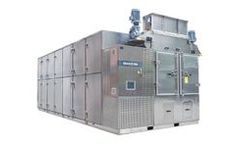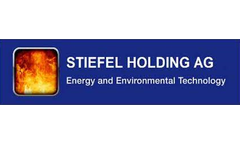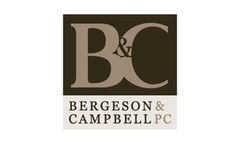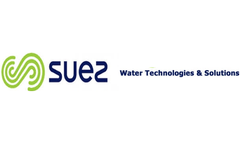Sludge Drying And Incineration Articles & Analysis
14 articles found
Generally, the moisture content of mechanically dewatered sludge discharged from sewage plants is still as high as 60%~80%, and the disposal methods such as composting, incineration and landfilling of sludge require further drying of the moisture content of sludge to 40%~50%, or even lower. ...
Generally, the moisture content of mechanically dewatered sludge discharged from sewage plants is still as high as 60%~80%, and the disposal methods such as composting, incineration and landfilling of sludge require further drying of the moisture content of sludge to 40%~50%, or even lower. ...
For several decades, every one of the world's rubbish continues to be shipped to landfills, sea fills and incineration facilities causing untold damage to the natural environment. Think contaminated water sources, toxic agricultural land, clogged valleys, and loads of air pollution. The worse part is that the majority of things people dispose of contain valuable resources, like glass, metals, ...
Generally, the moisture content of mechanically dewatered sludge discharged from sewage plants is still as high as 60%~80%, and the disposal methods such as composting, incineration and landfilling of sludge require further drying of the moisture content of sludge to 40%~50%, or even lower. ...
PROJECT BACKGROUND Project: Zhongke Ecology Wuzhong City Waste Incineration Sludge Disposal Project Sludge Type: Centralized Disposal Sludge Construction: Jan., 2020 Sludge Scale: 100T/D Completion: Mar., 2020 PROJECT OVERVIEW Equipment Selection: SBWHD40000'2 Dewatering Machine: Mechanical Wet Moisture: 85% Dried Moisture: 35% Features Efficiency Innovation Environment ...
Therefore, it is an ideal method to treat sludge through incineration. Sludge drying and incineration way is more common in Japan, Europe and the United States. ...
Aberdeen Sewage Treatment Plant in Aberdeen, Washington started up their new Electric Infrared Incinerator in May, 1981. The sewage sludge incinerator, product of Shirco, Inc., needed a pollution control device in order to meet state, local and federal requirements for atmospheric emissions, according to the emissions test on the unit performed ...
Regular Fuel Efficiency Applications Separate Oxygen and Combustibles Sensors In standard flue gas applications for Thermox analyzers, the user generally tries to extract the maximum energy from the fuel and transfers as much of that energy as possible to the process. These applications require the process to be operated as efficiently as possible by keeping both oxygen (excess air) and ...
In 2003, the Swiss Law prohibited the use of sludge compost as fertilizer in farming; This provided the opportunity for UTO to co-incinerate the sludge in the two waste incineration lines. However incinerating the sludge in the two existing lines had a knock on effect of ...
The U.S. Environmental Protection Agency (EPA) reports that more than 200,000 boilers, process heaters and incinerators will be impacted by a set of Clean Air Act regulations issued on February 21, 2011. Since EPA first proposed the Maximum Achievable Control Technology (MACT) rules in April 2010, several industry sectors have argued the costs of implementing the rules would pose an unreasonable ...
Thermal processes used in sludge disposal have become more attractive as process improvements have been introduced, such as power generation and efficient heat recovery. More and more utilities and agencies are reevaluating their sludge management practices to ensure that they are providing sustainable management solutions for their clients. The thermal process design approach to the disposal of ...
Abstract A proposed solution of a raw sludge incineration plant had been identified to meet the changing sludgestrategy requirements of United Utilities (a major UK water company) from 2005 – 2010. This solution wasendorsed by a UK water Regulator as part of their 5 yearly investment program. However, due to a changingenvironment, and work completed by the project and strategy team responsible ...
IntroductionThe city of Fitchburg, Massachusetts operates a multiple hearth incinerator that burns municipal sludge to minimize waste volumes. Although not universally used by municipalities in the United States, incineration is a widely accepted and used method of sludge disposal. ...
ABSTRACT Fluid bed incineration has been used as a sludge disposal method at the Northwest Bergen County Utilities Authority since 1969 when the first incineration unit was installed. In 2000, the third generation plant became operational. Over this period, environmental regulations have changed, as have the State mandated air pollution control devices. Since the State mandated a wet ...














